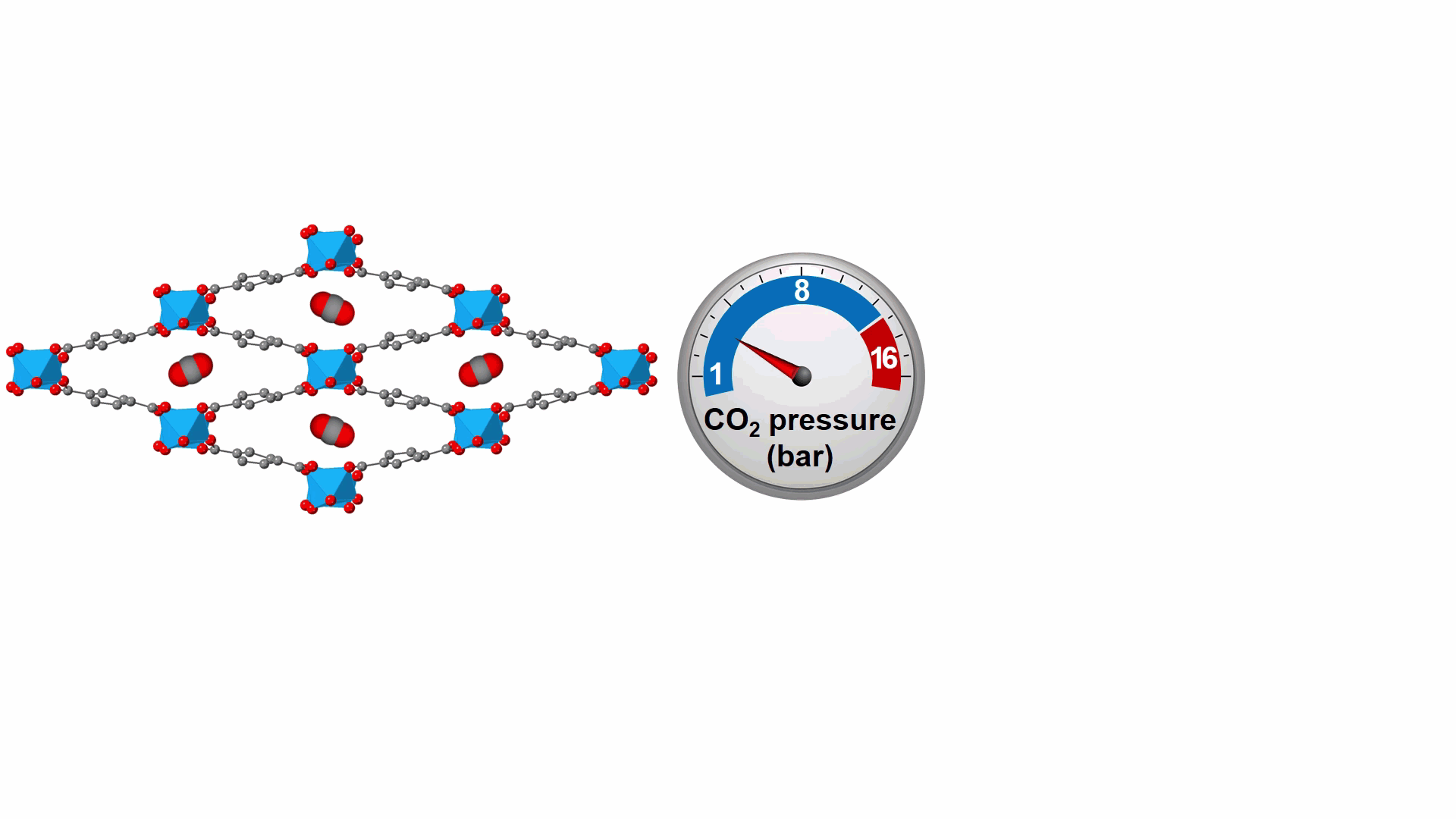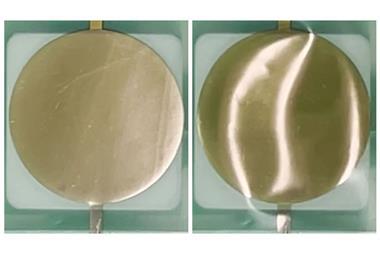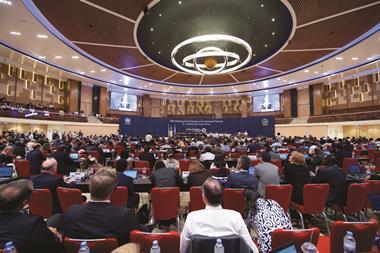Adsorbing carbon dioxide into certain metal–organic frameworks (MOFs) could provide greener alternatives for refrigeration. Juan Manuel Bermúdez García and co-workers at the University of Coruña, Spain, have discovered that some MOFs can cool down their environment as they ‘breathe out’ CO2 . The thermal changes are big enough to meet the most critical industrial cooling requirements.

When adsorbing different gases, MOFs sometimes undergo structural changes that expand their pores. Because these transformations resemble respiration, they are known as breathing transitions.
Now, for the first time, researchers have observed that thermal energy changes accompany these transitions. When aluminium-terephthalate MOFs adsorb pressurised CO2, the material warms up as its pores expand. As the gas is liberated again, the MOF shrinks back to its original form and absorbs heat, which could be used to refrigerate its surroundings. This phenomenon, dubbed breathing-caloric effect, adds to a family of effects where external stimuli – such as mechanical forces and electromagnetic fields – induce cooling.
The researchers claim that breathing MOFs could replace hydrofluorocarbons (HCFs) for refrigeration, which encompass an enormous global warming potential.
The system could work between –20 and 60°C, which isn’t possible if using carbon dioxide alone as refrigerant. Contrary to other alternatives, the MOFs require only low CO2 pressures while showing thermal changes similar to HCFs and other refrigerants. Although this could stimulate industrial implementation, some precise properties remain unknown – including the exact cooling temperature transitions triggered under operation.
References
J García-Ben et al, Chem. Mater., 2022, 34, 7, 3323 (DOI: 10.1021/acs.chemmater.2c00137)

















No comments yet